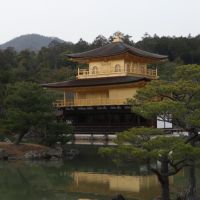A Perfect Guide to Geisha Dance Performance
Ai Kazeki
Latest posts by Ai Kazeki (see all)
- A Perfect Guide to Geisha Dance Performance - 2017/07/18
- Savor the Finest Tea at a Riverside Tearoom in Kyoto - 2017/06/19
Kyoto Geisha Dance
Dance is one of the most important performances Geisha do at Ozashiki.
To an ordinary person, it might be difficult to tell the difference between the dances.
Have you ever wondered what the moves mean, what they represent?
Or were you worried that you do not know much about it before seeing the dance?
Don’t worry, this article will be a complete guide for you to enjoy Geisha dance thoroughly!
Contents
■The Four Main Dances (songs)
There are four famous songs performed by Geisha in Kyoto.
They are called Gion Kouta, Kyo no Shiki, Washi ga Zaisho, and Miyagawa Ondo.
They each have different meanings and the impression you get differ from one to another.
I will explain each dance and what the moves mean below.
■Gion Kouta (祇園小唄)
This song is the most famous and typical song for Geisha dance performance.
There are many words that describe places and scenery in Kyoto, such as Higashiyama, Gion, and Daimonji (verse 2) in the lyrics.
There are also words related to Geisha, which are furisode, dararino obi and kuchibeni (verse 2).
Dararino obi is a special way of tying obi for Geisha, like the photo below.
Lyrics (verse 1)
月はおぼろに東山
Tsuki wa oboro ni Higashiyama
Geisha is expressing the moon with her hands.
霞む夜毎のかがり火に
Kasumu yo mai no kagaribi ni
夢もいざよう紅桜
Yume mo izayou benizakura
しのぶ思いを振袖に
Shinobu omoi wo furisode ni
Geisha is holding her sleeves to express “furisode”, which are the sleeves of kimono.
祇園恋しや だらりの帯よ
Gion koishi ya dararino obi yo
■Kyo no Shiki (京の四季)
This song mainly focuses on Gion and surrounding areas, Higashiyama and Maruyama.
It is a very Kyoto like, calm and elegant song.
Lyrics (verse 1)
春は花
Haru wa hana
いざ見にでんせ 東山
Iza mini dense Higashiyama
色香あらそう 夜桜や
Irokou arasou yozakura ya
浮かれ浮かれて
Ukare ukare te
The literal meaning here is floating and floating.
Geisha is expressing the moves with her fan.
粋も無粋も ものがたい
Iki mo busui mo monogatai
二本差しても 柔らこう
Nihon sashitemo yawarakou
祇園豆腐の 二軒茶屋
Gion doufu no Nigenchaya
みそぎぞ 夏は うち連れて
Misogizo Natsu wa uchi turete
川原につどう 夕涼み
Kawara ni tudou Yu suzumi
よいよい よいよい
Yoiyoi yoiyoi
よいやさ
Yoiyasa
■Washi ga Zaisho (わしが在所)
This is a country song. It expresses the life at the countryside, mainly the events and customs.
It is a simple and natural song.
In the dance, you can see the charming moves of Geisha.
Lyrics (verse 1)
わしが在所は 京の田舎の片ほとり
Wahsi ga zaisho wa Kyo no inaka no hotori
八瀬や大原に牛曳いて
Yase ya Oohara ni ushi hiite
柴打盤 床机頭へちょいと載せ
Shibauchiban shougiatama e choito nose
In this line it is saying, putting a shibauchiban on the top of a shougiatama (small table).
Geisha is making a gesture of it in the dance.
梯子買わんせんかいな
Hashigo kawasenkaina
In this line it is saying, why don’t you buy a ladder.
The Geisha is expressing a woman looking for someone that would buy one.
黒木買わしゃんせ エエエエ
Kurogi kawashanse e e e e
■Miyagawa Ondo (宮川音頭)
This is a very bright and gorgeous song, often danced at the very end.
It expresses the specialties and delicious meals of Kyoto.
Lyrics (verse 1)
町も野山も花ざかり
Machi mo noyama mo hanazakari
京の都に春が来た
Kyo no miyako ni haru ga kita
花の都に春が来た
Hana no miyako ni haru ga kita
花は宮川 花は宮川
Hana wa Miyagawa Hana wa Miyagawa
ヨーイ ヨーイ ヨイ京おどり
Yo-i yo-i yoi Kyo odori
In the second verse, there are many words to do with specialties of Kyoto.
To make it easier, I have underlined them and put a brief explanation of what it is.
Lyrics (verse 2)
国へみやげは都紅
Kuni e miyage wa miyakobeni (precious lipstick)
納豆八つ橋みすや針
Natto (fermented soybeans) yatsuhashi (cinnamon flavored traditional dessert of Kyoto) misuyabari (sewing needles)
すぐきしばづけ五色豆
Suguki (fermented pickles) shibazuke (vegetable picked in red shiso leaves) goshikimame (five-colored roasted sweet beans)
みやげばなしは みやげばなしは
Miyage banashi wa miyage banashi wa
ヨーイ ヨーイ ヨイ京おどり
Yo-i yo-i yoi kyo odori
It is saying that there are many specialties to get as a souvenir in Kyoto, but they hope that the best souvenir is the experience of seeing the dance!
■Information
Did you get motivated to see the dance and see if you can notice the moves you learned today?
To actually see the dance, please have a look at the tours we have!
We have a Geisha Tour where you can enjoy not only Geisha dance but also chatting, playing games, and taking photos with Geisha!
If you want to see more video clips, check our youtube channel as well!
https://www.youtube.com/channel/UCVAVsWGS5nOKxYrcmL_O-nw
For more articles about dances, check these out too!
■References
祇園小唄. (n.d.). Retrieved July 17, 2017, from http://www.worldfolksong.com/songbook/japan/gion-kouta.htm
(n.d.). Retrieved July 17, 2017, from http://www15.tok2.com/home/waon/hauta/hauta19.htm
Make an online reservation to have a precious time with Geisha!




